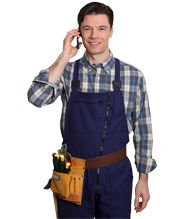Encountering a stuck sliding door can be a frustrating experience. This comprehensive guide will explore the reasons behind this common issue and provide practical solutions. From understanding the root causes to learning the right techniques for a smooth fix, our step-by-step guide is designed to help you effectively address and prevent sliding door problems.
Why is My Sliding Door Stuck?
Sliding doors, with their space-saving design and aesthetic appeal, are integral to many homes. However, they are prone to getting stuck, often due to reasons like track misalignment, accumulation of dirt and debris, and wear and tear of rollers and tracks. Weather changes can exacerbate these issues, with materials expanding or contracting, leading to further misalignment. Understanding these underlying causes is essential for troubleshooting and fixing the problem. Regular inspection, cleaning, and timely maintenance can go a long way in preventing such issues and ensuring the smooth operation of your sliding doors.
Tools You Need for a Smooth Fix
Having the right tools is crucial to effectively unstick a sliding door. The essential toolkit should include a screwdriver for adjustments, a high-quality lubricant like silicone spray for smooth movement, a sturdy cleaning brush, and a vacuum to clear out debris from the track. Additionally, a level can help ensure the door is aligned correctly, and pliers might be needed for more intricate adjustments or to replace parts. These tools make the repair process more manageable and ensure you can address the most common issues without needing professional help.
Step-by-Step Guide to Unstick Your Sliding Door
- Detailed Inspection: Start by closely examining the door for any visible signs of damage or obstruction. This includes checking the tracks, rollers, and door frames.
- Comprehensive Cleaning: Use a brush to loosen debris and dirt in the track, followed by vacuuming to ensure thorough cleaning. Pay attention to corners and edges where dirt accumulates the most.
- Roller and Track Adjustments: Adjust the height and alignment of the door using a screwdriver. This may involve tightening or loosening the screws that hold the rollers in place.
- Lubrication for Smooth Operation: Apply a silicone-based lubricant to the tracks and rollers. Avoid oil-based products as they can attract more dirt.
- Alignment Check: Use a level to align the door properly. Misalignment can be a major reason for sticking.
- Functionality Test: After the adjustments, gently slide the door back and forth to test its movement. It should move freely without resistance.
Common Sliding Door Problems and Solutions
Sticking is just one of many issues that can plague sliding doors. Others include problems with locking, squeaking noises, and difficulty in handling. Each of these difficulties has its own set of solutions. For instance, squeaking usually indicates a lack of lubrication, while locking issues often stem from alignment problems. It's important to regularly check these aspects of your sliding door to ensure its optimal performance. Quick fixes can often resolve these issues, but ignoring them can lead to more significant issues requiring professional intervention.
Tips for Preventing Sliding Door Issues
Proactive measures are crucial in maintaining the health of your sliding doors. Regular cleaning of the tracks and rollers, checking for loose or worn-out parts, and applying appropriate lubricants can greatly reduce the chances of your door getting stuck. Additionally, it's important to handle the door with care to avoid unnecessary strain on its components. Avoid slamming the door and ensure it's used as intended. Seasonal checks, especially before and after harsh weather conditions, can also help identify potential problems early on. By adopting these preventive practices, you not only extend the lifespan of your sliding door but also ensure its reliability and safety.


